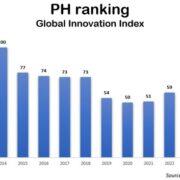The country is gradually getting back the jobs lost due to the pandemic but the smaller progress in the past quarter suggests the need to address remaining restrictions before the economy can get closer to normal, economic managers in a joint statement released by the National Economic and Development Authority (NEDA) said last Tuesday, March 9.
The latest labor force survey (LFS) data show that between October 2020 and January 2021, some 1.4 million jobs were restored across sectors.
The labor force participation rate, or the proportion of the working age population that is either working or actively looking for work, increased from 58.7 percent to 60.5 percent. The biggest improvement can be seen in the National Capital Region, where some 269,000 jobs were restored.
As the economy was further reopened, the unemployment rate decreased from 12.4 percent to 8.8 percent in January 2021.
The latest employment statistics also show the underemployment rate dropped from 11.1 percent to 8.2 percent in the same period.
Acting Socioeconomic Planning Secretary Karl Kendrick Chua, Finance Secretary Carlos Dominguez, and Budget Secretary Wendel Avisado said while the unemployment rate remains unchanged at 8.7 percent, more opportunities from the easing of restrictions meant that more people are rejoining the labor force.
Meanwhile, outside of NCR, unemployment increased from 8.2 percent in October 2020 to 8.7 percent in January 2021. The underemployment rate also increased from 14.9 percent to 17.1 percent in the same period.
These can be attributed to the loss of jobs and reduction in income from weather disturbances and flooding, the outbreak of the African swine fever that badly affected livestock production, and continued mobility restrictions that affected travel and domestic tourism especially around the holiday season when people in the provinces typically have additional income opportunities.
To accelerate economic growth and job creation this year, the economic managers said a three-pronged strategy is needed: First, safely reopening our economy while strictly adhering to public health protocols and intensifying Prevent, Detect, Isolate, Treat and Reintegrate strategies.
Second, fully implementing the recovery package, especially those whose budgets have already been allocated but not yet fully spent. And third, ensuring timely implementation of the vaccine program to cover the entire adult population.
The safe reopening of the economy requires a calibrated, more targeted approach, the economic managers said.
“On the one hand, we will need to be more vigilant in high-risk areas by strictly enforcing the health protocols and using localized quarantines. This way, we can reduce virus spread without affecting the healthy majority who are in need of jobs to address their hunger and other health concerns. On the other hand, in low-risk areas, we can gradually start allowing expanded capacities in businesses, transport, and other sectors, as well as safely widening the age group allowed to go out,” the joint statement read.
Moreover, the economic managers underscored that full and fast implementation of the recovery package would underpin economic growth this year and onwards.
The higher stimulus through the Bayanihan II, the 2020 budget extension, the 2021 budget, as well as the swift enactment or implementation of key legislations, such as the Financial Institutions Strategic Transfer (FIST) Act, the Corporate Recovery and Tax Incentives for Enterprises (CREATE) Act, and the Government Financial Institutions Unified Initiative to Distressed Enterprises for Economic Recovery (GUIDE) Act, are all crucial.
“We need to ensure that programs already budgeted for under Bayanihan II and under the 2020 and 2021 budgets are implemented quickly. Our recovery and long-term development prospects also hinge on accelerating the infrastructure program, which has the highest multiplier effect on jobs,” the economic managers said.
—
Stay updated with news and information from NEDA by visiting their website at https://www.neda.gov.ph.






